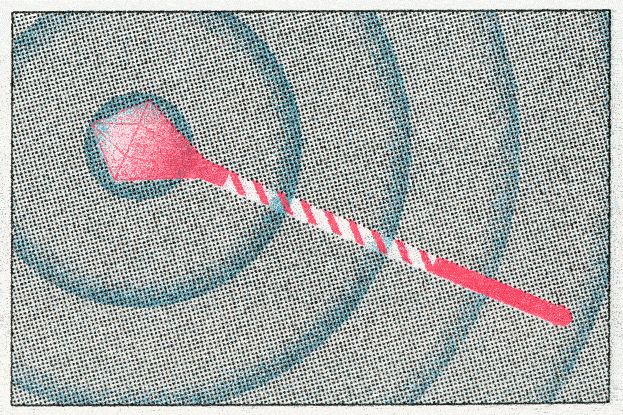Health crises can spur magical thinking
Share this article Share Comment on this story Comment
A friend gave my daughter Emily a magic fairy wand when she was diagnosed with high-risk neuroblastoma at age 5. The note attached said it belonged to a little girl with cancer and that it cured her. It promised to cure Emily, too. Wp Get the full experience. Choose your plan ArrowRight I rubbed the wand all over her back, arms and legs and put it in my nightstand drawer, where it has remained for more than a decade. Though I knew better than to believe a plastic stick with pink feathers could save her life, it didn’t stop me from trusting it could during the many years of follow-up scans, survivorship appointments and managing the collateral damage from her treatment. This kind of magical thinking eased my anxiety and uncertainty and gave me what her doctors couldn’t — a promise that she’d live.
I’m debating whether I should send her to college with it in a few months.
While it may seem implausible, research suggests that magical thinking is wired into our brains and for thousands of years has been an integral part of our existence, across cultures, race and religions.
“A talisman can give people hope and allow them to be more relaxed, more present and more supportive,” says Naama Hofman, an assistant professor in the department of psychiatry at Mount Sinai’s Icahn School of Medicine in New York. “It’s similar to the placebo effect, where people get better just by the hope that they will.”
Advertisement
In medieval times, talismans for good luck offered extra assurance during surgeries. Though technology and medicine have evolved, our tendency to believe in magic has not.
But studies have suggested that for many people, the practice can play an important role in our daily lives, especially in times of crisis.
Stuart Vyse, a psychologist and author of “Believing in Magic: The Psychology of Superstition,” says he sees people turn to magical beliefs when the stakes are high. Cancer diagnoses, in particular, attract magical thinking because people find them particularly scary and in most cases there’s no surefire way to cure cancer.
“When there’s a pill to take for a disease, or someone breaks a leg and we cast it, we don’t really see magical thinking turn up, because we know there’s an effective treatment and outcome,” Vyse says.
But when medicine and science can’t provide us with a guarantee, he says, a “psychological gap” exists and a need for something better, that might improve the odds, takes over.
“The strongest effect of magical thinking is simply the emotional benefit in the moment,” Vyse said.
Advertisement
In my mind, the wand somehow was going to improve Emily’s 50-50 odds of survival. Knowing that another girl’s family put their faith in the same wand and that she had survived helped quiet my fears that the cancer treatments might not work. I tucked it in my suitcase and for 18 months it traveled with us from home to hospital. It gave me the illusion of control during a time I felt helpless and consumed by worry and fear, a coping strategy that some studies have found can be effective.
“Uncertainty is difficult to tolerate, especially for people with anxiety,” said Hofman. “Having something that reduces it improves our health and behavior.”
In her research, Jane Risen, a professor of behavioral science at the University of Chicago, describes how people can believe what we also don’t believe through a dual-processing model of cognition know as system one and system two. System one makes quick and efficient decisions, often influenced by emotion and intuition. System two is slow and more methodical. It is more apt to notice things that lack logic.
Advertisement
“But in magical thinking, we see that system two will often acquiesce to system one, even though system two knows the belief isn’t true,” Risen says. “System one drives the show because the intuition feels so possibly true, and it’s just too powerful to shake.”
Risen says our decision ultimately comes down to the cost of ignoring one of these two processes. In my case, the cost of getting rid of the wand was unpleasant, and the cost of keeping it was nonexistent. I had to keep it.
Watching Emily struggle through a brutal protocol — six rounds of chemotherapy to shrink a tumor on her adrenal gland, an eight-hour surgery, back-to-back stem cell transplants, 21 rounds of radiation and six months of an experimental therapy — was emotionally crippling. Her dicey visits to the intensive care unit had the power to take me down. I was game for anything that helped.
Advertisement
Hofman says the benefits of a talisman for mental health come from figuring out what soothes us: “Knowing we have the ability to cope with a difficult situation makes us active participants. We get to decide what we need and when we need it.”
Of course, becoming too attached to a talisman can have drawbacks, says Hofman. For example, if someone thinks they need to forgo treatment because they forgot their talisman at home, or they need to tap it five times to continue, then it becomes a source of distress rather than comfort.
It’s important to ask yourself, “Is this helpful or not?” Hofman says. Assigning good meaning to the object, using it mindfully and taking it out at the right times are signs of healthy behavior.
Scientists have recently studied the meaning-making processes and behaviors behind this widespread belief system and how it’s moved through space and time. One thing was for sure: Magical thinking was a powerful resident on the pediatric oncology floor where my daughter was treated.
Advertisement
A friend’s mother sent me a “special” red-and-white-striped cloth that had been soaked in a healing spring; my aunt gave us a figurine blessed by the pope; and “lucky” teddy bears arrived from friends and relatives all the time.
At one point, Emily’s oncologist, a woman steeped in hard science, suggested friends and family make paper cranes, telling us that in Japanese, Chinese and Korean cultures, 1,000 cranes bring good health and fortune. Soon, thousands of tiny, sparkly, giant and personalized cranes arrived in boxes. We strung them in Emily’s bedroom.
Emily believed that her stuffed animal “Horsey” needed his vitals taken before hers, but she wasn’t convinced that the cranes offered any benefit. “More dumb birds,” she said at one point after opening dozens of boxes of them.
“Magical thinking is pervasive because science doesn’t offer definitive answers,” says Ian Jarvie, who wrote a recent study that looked at how science is often incomplete and uncertain. “It’s always going to be an ongoing project.”
Of course, the birds, the teddy bears and the wand did not save Emily’s life — doctors and medicine did. But that now-weathered pink-feathered rod did save mine. It helped me cope.
Emily has made it clear that she’s not taking the wand to college with her. Instead, it will stay in my nightstand as a reminder of hope, health and my daughter.
Share
Source: The Washington Post


